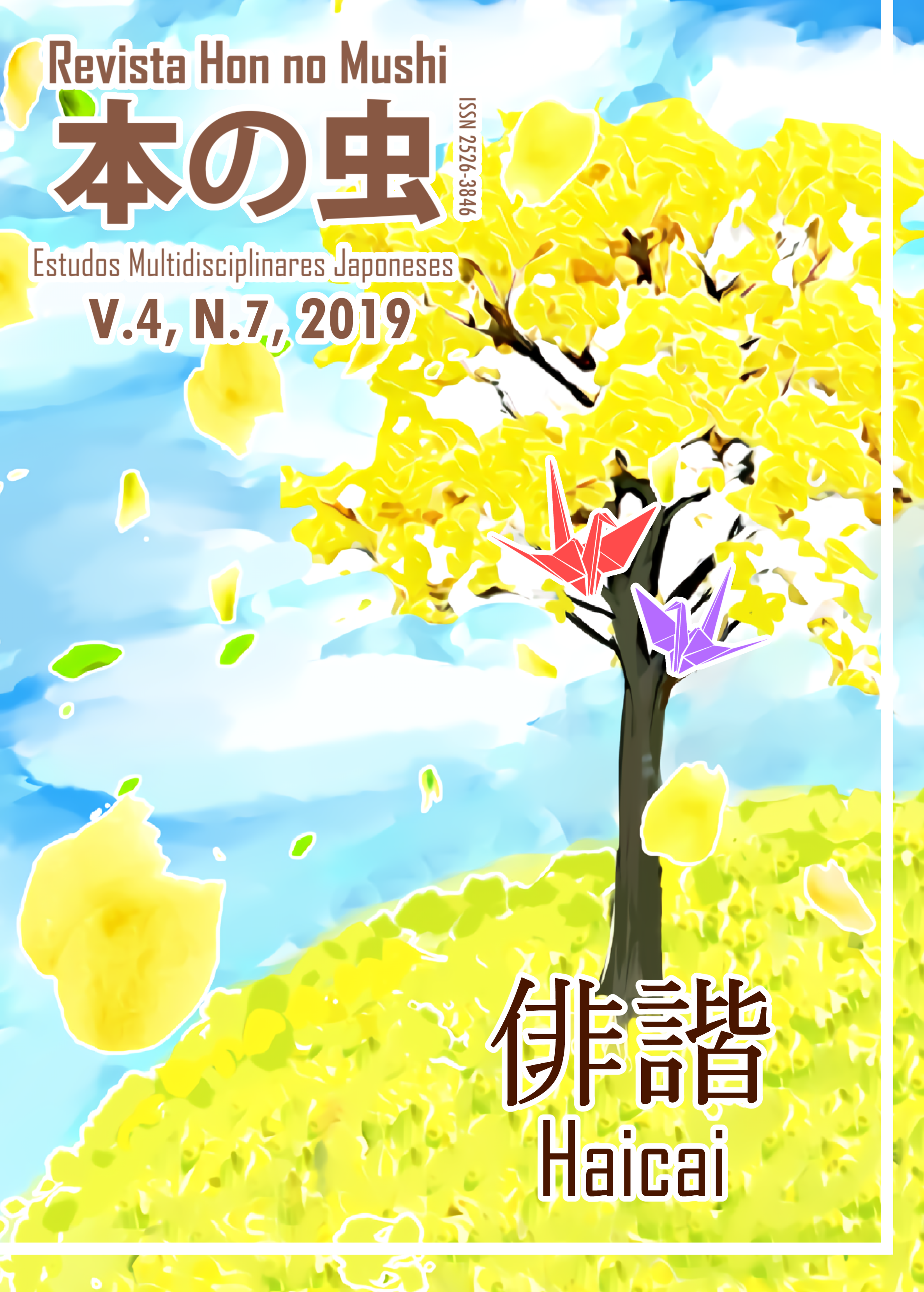AS CAUDAS DA RAPOSA: ENSAIO TEÓRICO SOBRE INARI E SUA CONCEPÇÃO COMO DIVINDADE JAPONESA
Palabras clave:
Mitologia, Shinto, Inari, KitsuneResumen
O presente artigo tem como objetivo principal demonstrar um panorama geral sobre a divindade japonesa Inari, levando em consideração a carga cultural importada juntamente com as correntes ideológicas e culturais que levaram o Budismo e os kanji para o Japão, as correntes de acontecimentos dentro da história japonesa, que influenciaram de forma direta ou indiretamente a formação religiosa no Japão, e a visão da população japonesa com relação ao divino e ao culto em si.
Descargas
Citas
HASHIGUCHI, Naotake. The Izu Islands: Their role in the historical development of ancient Japan. Asian Perspectives, Vol. 33. University of Hawai’I, 1994.
HEINE, Steven. From Rice Cultivation to Mind Contemplation: The Meaning of Impermanence in Japanese Religion. History of Religions. Maio, 1991.
HEINE, Steven. Zen Skin, Zen Marrow: Will the Real Zen Buddhism Please Stand Up?. Oxford University Press. New York, 2008.
HENSHALL, Kenneth G. História do Japão. Pentaedro, 2011.
HOLLAND, Glenn Stanfield. Gods in the desert: religions of the ancient Near East. Rowman & Littlefields publishers, inc. United Kingdom, 2009.
KATO, Kenkichi. Hatauji and their people. Hakusuisha; Tokyo, 1998.
KARGUT, Kim. Animating Inari: Visions of contemporary Shintō in Inari, konkon, koi iroha. College of Graduate studies and research. University of Saskatchewan, 2015.
KLEIN, Richard G. O despertar da cultura: A polêmica teoria sobre a origem da criatividade humana. Jorge Zahar Editora. Rio de Janeiro, 2005.
KOIZUMI, Tetsunori. Adoption and Adaptation of an Imported Culture: Buddhism in Thailand and Korea. Society and Culture: Journal of the Socio-Cultural Institute of Ryukoku University, Japan, 2004. KOUDELA, Pál. The role of Korea in cultural transmission between China and Japan during Three Kingdoms Period. Prague Papers on History of International Relations. Praga, 2014.
LEROI-GOURHAN, André. As religiões da pré-história. Lisboa: Edições 70, 2007.
LEE, Jae-seok. Diplomatic stances of Japan in the 7th century: Rivalry between the Pro-Silla and Pro-Baekje factions. The journal of Northeast Asian History. Vol. 07-02. Seoul, 2010.
MARQUES-RIVIERE, Jean. Amulletes, talismans et pentacles dans les traditions orientales et occidentales. Paris, 1938.
MEEKS, Lori. The Disappearing Medium: Reassessing the Place of Miko in the Religious Landscape of Premodern Japan. History of Religions Vol. 50. University of Chicago, 2011.
MITFORD, Algernon Bertram Freeman. Tales of Old Japan. Lord Redesdale (1871). London.
MORGAN, Lewis. [1877]. A sociedade antiga. In. Evolucionismo Cultural – Textos de Morgan, Tylor e Frazer. (Organizador Celso Castro). Rio de Janeiro: Zahar, 2005.
NAKAGAWA, Sugane. Inari Worship in Early Modern Osaka. Osaka: The Merchants’ Capital of Early Modern Japan. Ithaca & London: Cornell University Press, 1999.
NITO, Atsushi. Ancient Kingship and City Castle. Yoshikawa Kobunkan. Tokyo, 1998.
ROBERTS, Jeremy. Japanese Mythology A to Z. New York, Chelsea House, 1956.
SMYERS, Karen Ann. My own Inari: Personalization of Deity in Inari worship. Japanese Journal of Japanese Studies. 23th Edition. Princeton University, 1996.
SMYERS, Karen Ann. The Fox and the Jewel: Shared and Private Meanings in Contemporary Japanese Inari Worship. Honolulu, University of Hawaii Press, 1999.
WAUGH, Daniel. The Silk Roads in History. Expedition journal of the University of Pennsylvania Museum of Archaeology and Anthropology. Pennsylvania, 2010.
WONTACK, Hong. Ancient Korea-Japan Relations: Dating the Formative Years of the Yamato Kingdom (366-405 CE) by the Samguk-sagi Records and Reinterpreting the Related Historical Facts. The Open Area Studies Jornal. Seoul National University, 2009.
WONTACK, Hong. Yayoi Wave, Kofun Wave, and Timing: the Origin of the Japanese
People and Japanese Language. Korean Studies, vol. 29. University of Hawaii, 2005.
YAMASHIRO, José. Pequena História do Japão. São Paulo, Editora Herder, 1964.
YANG, Juping. The relations between China and India and the Opening of the Southern road during the Han Dinasty. The Silkroad journal, vol. 11. San Diego, 2013.
Descargas
Publicado
Número
Sección
Licencia
Los derechos de autor pertenecen a la Revista Hon en Mishi - Estudios Multidisciplinarios Japoneses ya los autores de cada artículo. Todo trabajo o parte de él, cuando citado o utilizado, debe ser referenciado.



















